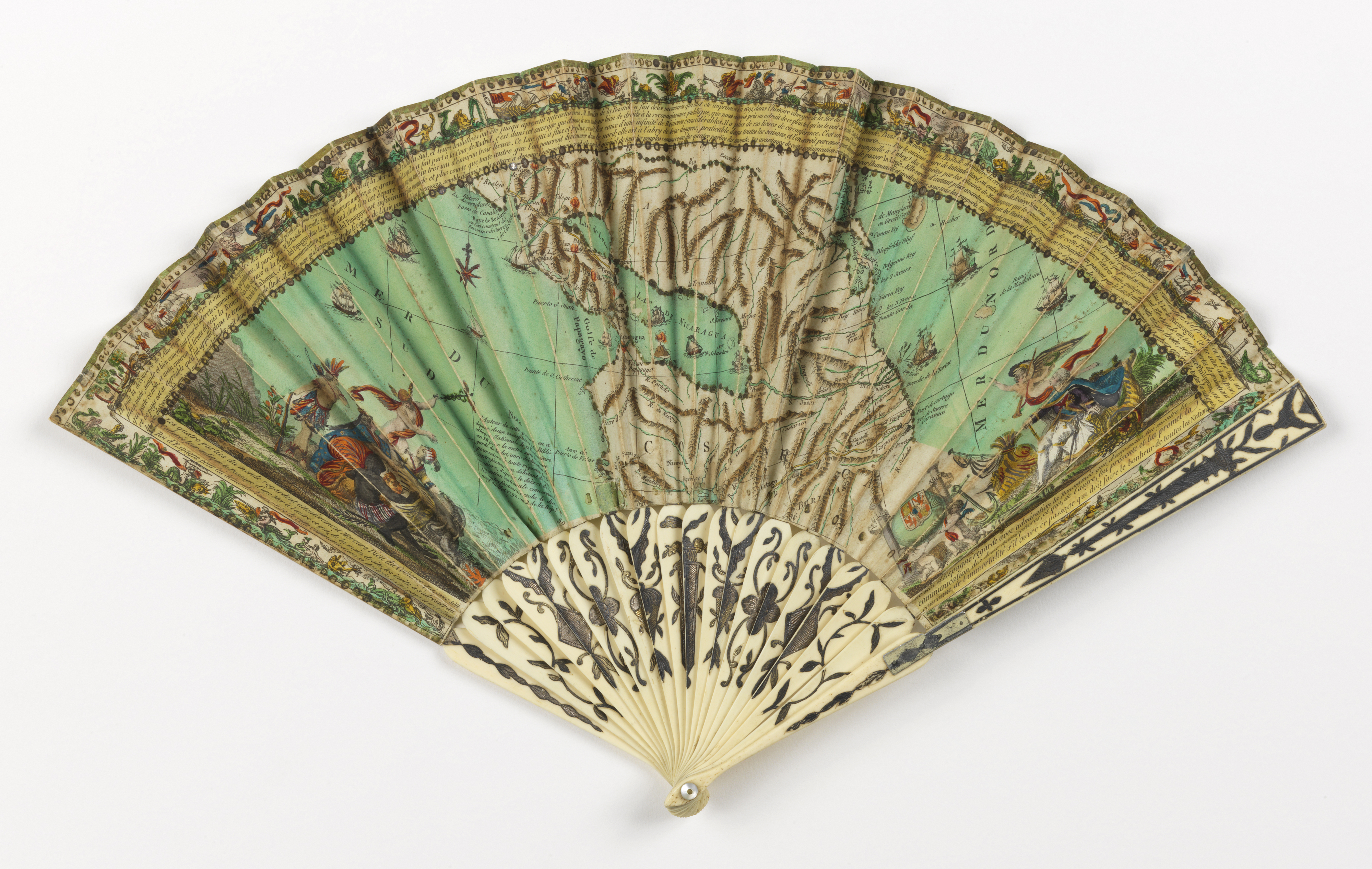The desire to build a transoceanic canal through Nicaragua has endured for centuries. In 1791, a Frenchman, Martin de la Bastide, published a treatise urging the King of Spain to construct a canal through Central America by way of Nicaragua. The proposed canal took advantage of the Rio San Juan, a river on the Caribbean Sea connected to Lake Nicaragua. In the mid-nineteenth century, prior to construction of the Panama Canal, Cornelius Vanderbilt (American, 1794-1877) ran a transit company that brought travelers from the eastern United States to California. Passengers departed by ship and transferred to paddleboats and stagecoaches to make the journey across Nicaragua to the Pacific coast, where they boarded another ship bound for California. This late eighteenth century fan by J. LeRoy uses the allegorical figures of the four continents to promote the commercial importance of the project. On the left side of the fan, they listen attentively to Mercury, the god of commerce, who points his staff in the direction of Nicaragua’s Pacific coast and future prosperity. The King of Spain appears on the right side. In recent years, a plan developed by the Nicaraguan government and a Chinese firm may bring this desire for a canal to fruition.
Tombstone
- Fan, France, 1793–1803, Gift of the Estate of James Hazen Hyde
Collection Record

One thought on “A Fan with a Plan”
Pierre-Henri Biger on January 31, 2017 at 4:45 am
Researchers about this fan could take a profit from reading my article “Cartographic Hand Fans advertising a huge development project”, Fan Association of North America Journal, Spring 2016, p. 14-26 or, in French but somewhat bettered, “Des éventails cartographiques au service d’un projet économique”, Le Vieux Papier, F. 423, janvier 2017, p. 205-216, pl. I et II.